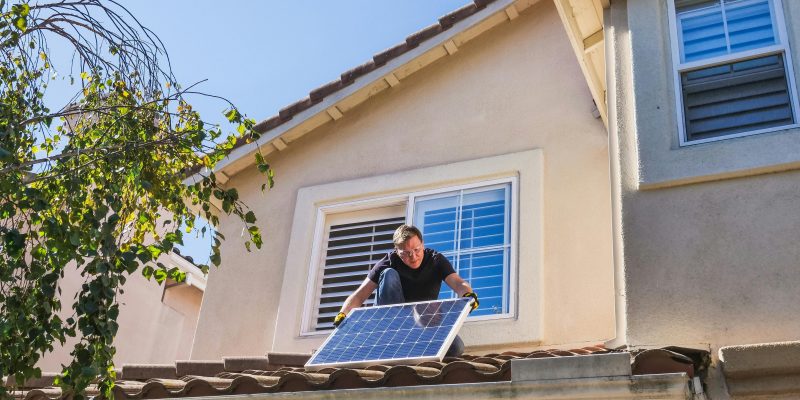Solar power is an increasingly popular choice for homeowners seeking to reduce their carbon footprint, lower energy costs, and gain energy independence. This comprehensive guide provides homeowners with everything they need to know about using solar power, from understanding how solar panels work to maximizing the benefits of solar energy for their homes. By exploring the key aspects of solar power usage, homeowners can make informed decisions and harness the power of the sun to create a more sustainable and efficient home.
1. How Solar Panels Work
Through the process of the photovoltaic effect, solar panels, sometimes referred to as photovoltaic (PV) panels, transform sunlight into energy. Electrons are released into the photovoltaic cells of the solar panels when sunlight hits them, producing an electric current. This direct current (DC) is then converted into alternating current (AC) by an inverter, which can be used to power electrical appliances and devices in the home. Solar panels are typically installed on the roof of a home or in an open area with ample sunlight exposure to maximize energy production. Understanding how solar panels work is the first step for homeowners interested in harnessing solar power for their homes.
2. Assessing Solar Potential
Before investing in solar panels, homeowners should assess their property’s solar potential to determine its suitability for solar installation. Factors such as roof orientation, shading, and available space will impact the efficiency and performance of solar panels. Conducting a solar site assessment or consulting with a solar energy provider can help homeowners evaluate their property’s solar resources and identify the optimal location and size of their solar array. Additionally, consider local climate conditions, solar incentives, and regulatory requirements that may affect the feasibility of solar installation in your area. By assessing solar potential, homeowners can make informed decisions and maximize the benefits of solar energy for their homes.
3. Choosing the Right Solar Panels
When selecting solar panels for their homes, homeowners should consider factors such as panel efficiency, durability, warranty, and aesthetic appeal. Monocrystalline and polycrystalline solar panels are the two main types of solar panels available, each with its advantages and disadvantages. Monocrystalline solar panels are a popular option for residential installations because of their sleek black look and increased performance. Although polycrystalline panels have a blue tint and are usually less efficient, they are more reasonably priced. Additionally, consider the manufacturer’s reputation, warranty coverage, and certifications when choosing solar panels for your home. By selecting the right solar panels, homeowners can maximize energy production and ensure the long-term reliability and performance of their solar energy system.
4. Financing and Incentives
Investing in solar panels requires upfront capital, but there are various financing options and incentives available to make solar more affordable for homeowners. Solar loans, leases, and power purchase agreements (PPAs) allow homeowners to finance their solar energy systems with low or no upfront costs and pay for them over time through energy savings. Additionally, federal and state tax credits, rebates, grants, and incentives can significantly reduce the cost of solar installation and accelerate the payback period of your investment. Some utility companies also offer net metering programs that allow homeowners to earn credits for excess solar energy produced and exported to the grid. By leveraging financing options and incentives, homeowners can make solar energy more accessible and cost-effective for their homes.
5. Maintenance and Monitoring
Maintenance and monitoring are crucial aspects of ensuring the optimal performance and longevity of your solar power system. Regular solar inspections allow homeowners to identify and address any issues promptly, ensuring that the system operates efficiently. These inspections involve assessing the condition of solar panels, checking for potential shading issues, and verifying the proper functioning of inverters and other components. By conducting inspections periodically, homeowners can proactively maintain their investment and maximize energy production. Additionally, monitoring software provides real-time data on system performance, enabling homeowners to track energy production and detect any anomalies. Overall, investing in maintenance and monitoring services is essential for homeowners looking to harness the full benefits of solar power.
Conclusion
In conclusion, embracing solar power offers numerous benefits for homeowners, including reduced energy costs, environmental sustainability, and energy independence. By understanding how solar panels work, assessing solar potential, choosing the right solar panels, exploring financing and incentives, and implementing maintenance and monitoring, homeowners can make a successful transition to solar energy for their homes. Embracing solar power is not only a smart financial investment but also a significant step towards reducing carbon emissions and creating a more sustainable future. With the right knowledge, resources, and support, homeowners can harness the power of the sun and enjoy clean, renewable energy for their homes for years to come.




















